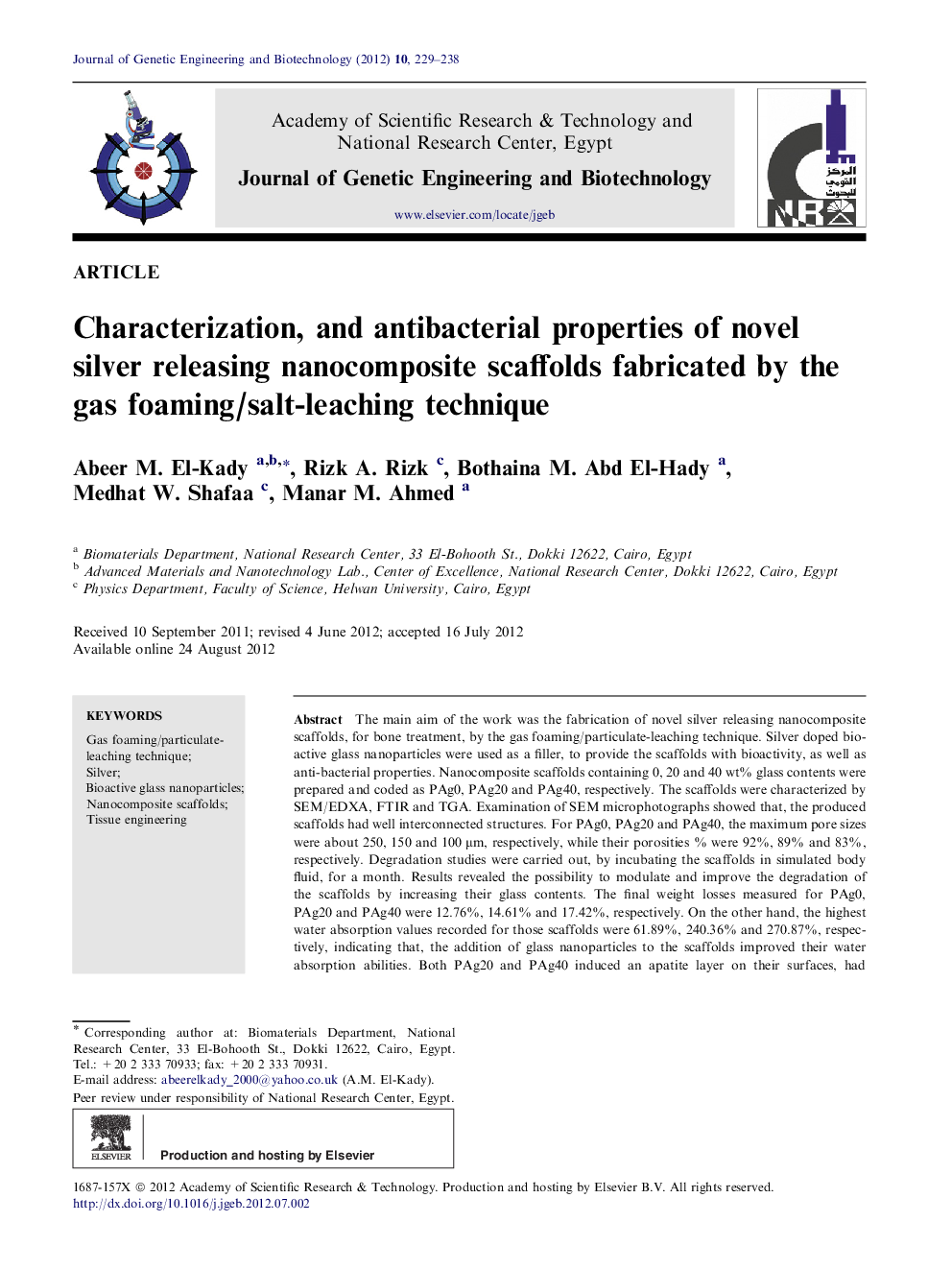| Article ID | Journal | Published Year | Pages | File Type |
|---|---|---|---|---|
| 2087934 | Journal of Genetic Engineering and Biotechnology | 2012 | 10 Pages |
The main aim of the work was the fabrication of novel silver releasing nanocomposite scaffolds, for bone treatment, by the gas foaming/particulate-leaching technique. Silver doped bioactive glass nanoparticles were used as a filler, to provide the scaffolds with bioactivity, as well as anti-bacterial properties. Nanocomposite scaffolds containing 0, 20 and 40 wt% glass contents were prepared and coded as PAg0, PAg20 and PAg40, respectively. The scaffolds were characterized by SEM/EDXA, FTIR and TGA. Examination of SEM microphotographs showed that, the produced scaffolds had well interconnected structures. For PAg0, PAg20 and PAg40, the maximum pore sizes were about 250, 150 and 100 μm, respectively, while their porosities % were 92%, 89% and 83%, respectively. Degradation studies were carried out, by incubating the scaffolds in simulated body fluid, for a month. Results revealed the possibility to modulate and improve the degradation of the scaffolds by increasing their glass contents. The final weight losses measured for PAg0, PAg20 and PAg40 were 12.76%, 14.61% and 17.42%, respectively. On the other hand, the highest water absorption values recorded for those scaffolds were 61.89%, 240.36% and 270.87%, respectively, indicating that, the addition of glass nanoparticles to the scaffolds improved their water absorption abilities. Both PAg20 and PAg40 induced an apatite layer on their surfaces, had anti-bacterial effect in agar plates, and their silver releasing profiles followed a diffusion-controlled mechanism. Therefore they could be used for bone treatment.
